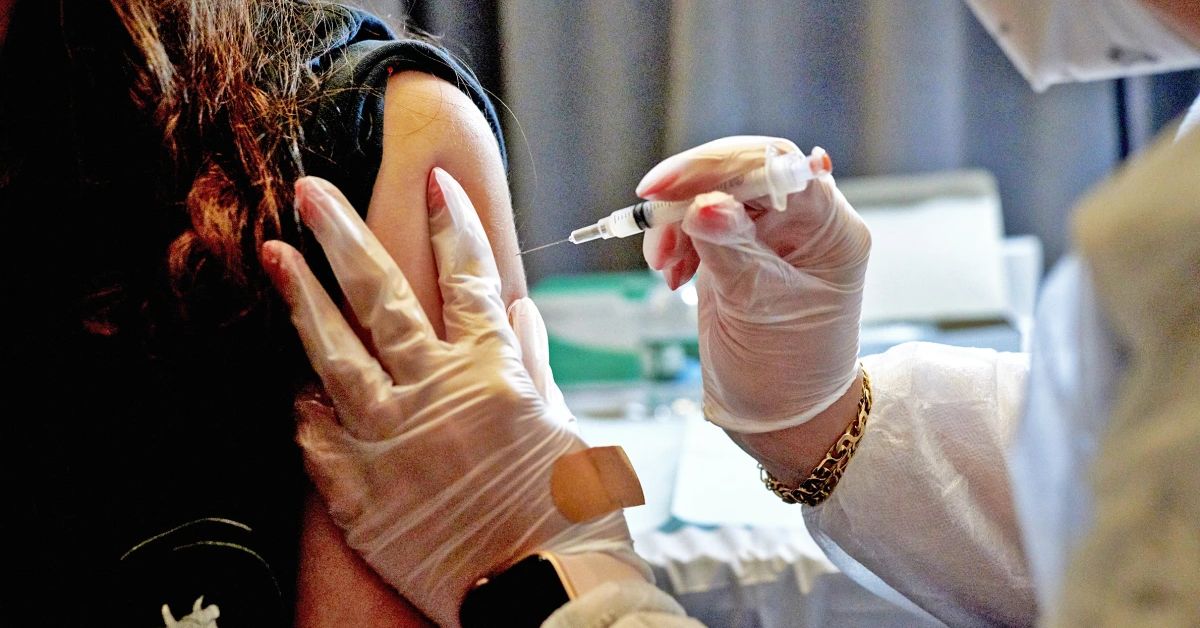OKLAHOMA CITY — After an initially strong reaction, Phil Maytubby, the deputy chief executive officer of this city’s Health Department, became concerned in the summer of 2021 when he noticed a decline in the number of people getting vaccinated against the Covid virus.
He was aware that the agency’s message plan required revision in light of the vast spread of uncertainty, anxiety, and false information across the country, both online and off.
Therefore, the Health Department carried out what is known as an online “sentiment search,” which is a method for determining how social media users feel about particular terms. The tool discovered that a significant number of people in Oklahoma City had a negative opinion of the word “vaccinate,” which was used heavily in the marketing campaign run by the health department.
Maytubby stated that if one did not know how the general audience was receiving their message, then one was “shooting in the dark.” Many individuals have not placed their faith in their state and local health departments during the past few years. As a result, health authorities across the country have been working to counteract misinformation and reestablish trust within their communities to make up for lost ground.
Twitter, for instance, is being used by advertising agencies to reach out to specific subsets of consumers, such as football fans in Kansas City and “Star Wars” fanatics in Alabama. To broaden their audience and increase their exposure, they are working together with celebrities and influential people like Stephen Colbert and Akbar Gbajabiamila. There has been some success as a result of the initiatives. More than 80 percent of people in the United States have already been given at least one dose of a Covid vaccine.
However, there is evidence to suggest that the skepticism and disinformation concerning COVID vaccinations now pose a threat to other public health concerns. According to the Centers for Disease Control and Prevention (CDC), the percentage of children who had received an influenza vaccination in the middle of December was comparable to that seen in December 2021. However, it was 3.7 percentage points lower when compared with late 2020. Even more alarming is the 18 percent drop in flu vaccination coverage among pregnant women over the past two years.
The vaccination rates for several prevalent children’s diseases have also decreased compared to their levels before the pandemic. According to a survey conducted by the Kaiser Family Foundation (KFF) and published on December 16, 35% of all American parents are against making it mandatory for children to get vaccinated against measles, mumps, and rubella before enrolling in school.
This number is up from 23% in 2019. There is a growing cloud of suspicion surrounding previously trusted vaccines, in addition to the exhaustion that comes from receiving so many doses.
A lack of investment in the public health system before the pandemic started is part of the problem. KHN and The Associated Press did a study and found that from 2010 to 2020, local health department spending fell by 18% per person. Between the 2008 recession and the start of the pandemic, nearly 40,000 jobs were lost in state and local health agencies.

So, their response to a public health crisis that only happens once every 100 years was complex and often not enough. For example, many local health departments used fax machines to report case counts in the early days of Covid.
Dr. Brannon Traxler, in charge of public health at the South Carolina Department of Health and Environmental Control, said, “We weren’t as flexible as we are now.” Traxler said that at the start of the pandemic, there were only two people on the team at South Carolina’s health department who worked with the media and the public. The group now has eight people.
The agency has also changed how it talks to people in other ways. This is the first year South Carolina has published data about flu shots every two weeks. The goal is to make more people aware of how well the images work—as of early December, not even a quarter of the adults and children in South Carolina eligible for flu shots had gotten them. This was even though the number of flu cases and hospitalizations was increasing. Last flu season, 51.4% of people of all ages in the U.S. got a flu shot.
Traxler said there seems to be a link between people who didn’t get the Covid and flu shots. Traxler said, “We’re just trying to clear up the wrong information out there.” The health department has teamed up with local leaders and groups to get people vaccinated. She also said that agency staff has become more comfortable talking to the media to better talk to the public.
But some experts in public health say that agencies are still not doing an excellent job with their messages. In public health, scientists often use words like “mRNA technology,” “bivalent vaccine,” and “monoclonal antibodies,” which are hard for many people to understand. A study published in JAMA found that the language used by state-level agencies to talk about Covid was often more complex to understand than the language used by the CDC.
“We have trouble getting complicated ideas across to the public,” said Brian Castrucci, CEO of the de Beaumont Foundation, a charity that works to improve public health. “We must take responsibility because our communication mistakes made it easy for false information to spread.”
Castrucci said that most Americans care about public health. At the same time, he said, a small but loud minority promotes an anti-science agenda, which has successfully sowed seeds of distrust. He said a single message would help the more than 3,000 public health departments nationwide. Together with other public health groups, the foundation set up the Public Health Communications Collaborative at the end of 2020 to spread information about vaccines that is easy to understand.
“Those who want to hurt the country need to be just as well organized as the good guys,” he said. “You’d think we’d learn something from this.” A report from the Pew Research Center that came out in October found that 57% of adults in the U.S. think that “false and misleading information about the coronavirus and vaccines has contributed a lot to problems” in the country during the pandemic.
“I was skeptical, just like everyone else,” said Davie Baker, 61, who runs a business selling window treatments in Oklahoma City. When the shots became widely available in 2021, she thought they had been made too quickly, and she was worried about some of the side effects she had read about online. At Sam’s Club, a pharmacist changed her mind.
“She just told me what the real point of the shot was,” Baker said. “She helped me understand some things better.” Baker signed up to get her first Covid shot in May 2021. Around the same time, the Oklahoma City Health Department noticed that the number of daily vaccine shots was dropping.
At the beginning of 2022, the department changed its marketing campaign. Instead of using the word “vaccinate” to get more people to get their Covid shots—a comment that people didn’t like, according to the agency’s social media analytics—the new campaign told people to “Choose Today!”
Maytubby said, “People don’t trust like they used to.” “They want to decide for themselves and act on their own.” He said that the word “choose” made that choice clear.
Maytubby thinks that the campaign “Choose Today!” was successful. Less than 20% of the 502 adults in Oklahoma City who took part in a survey during the first half of 2022 said they didn’t like or didn’t like very much a sample of “Choose Today!” ads. And about 86.5% of adults in Oklahoma City have had at least one dose of a Covid vaccine. This is more than the average for the state, which is about 73%.
Most likely, other things are going on that have helped Oklahoma City’s vaccination rates go up. In the same survey of adults in Oklahoma City, some people who had recently been vaccinated said that family members or church leaders had told them to get the vaccine or that they knew someone who had died from Covid. One person said that money was because work gave them $900 to get the vaccine.
Misinformation and false information are still being fought against, though. Since the 2017-18 school year, the number of children in Oklahoma County with the immunizations they usually need to start kindergarten has dropped by 4.5%. This is because more parents are looking for ways to get out of the requirements.
That makes Maytubby nervous. He said that doubting everything about vaccinations, from how they work to whether or not they are safe, is the primary way people try to make people doubt them. Maytubby said, “In that way, they’ve done pretty well.” Everything has changed because of false information.
Leave your comments if you enjoyed reading this post. Please revisit our site Journalistpr.com. soon for the most recent updates.

Leave a Reply